That time of the year again. When the Oxalis makes another pass at taking over the yard. Fortunately the bees really like it and it makes a good dye for cotton and wool.
(Old post notes about dyeing with Oxalis)
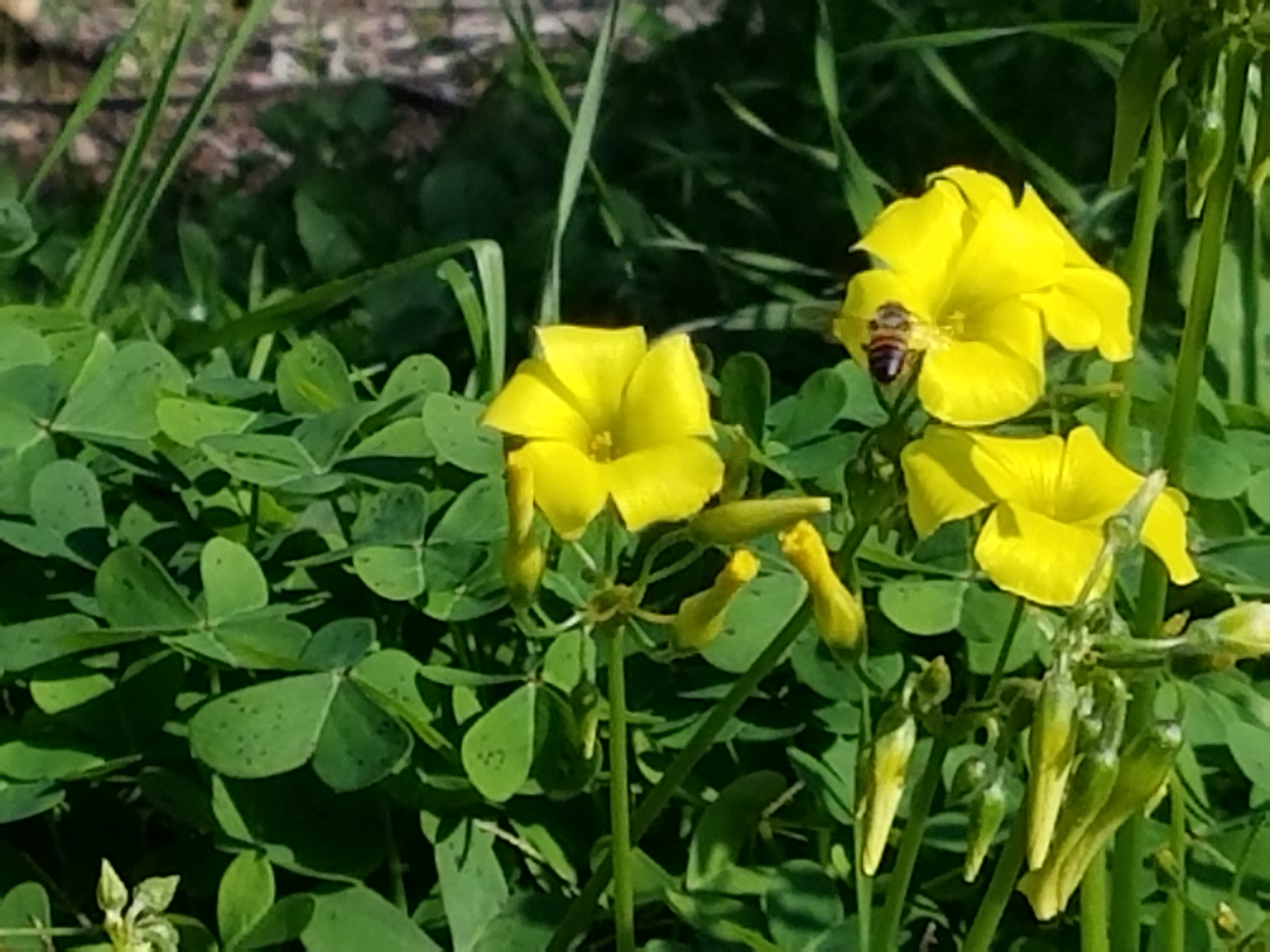
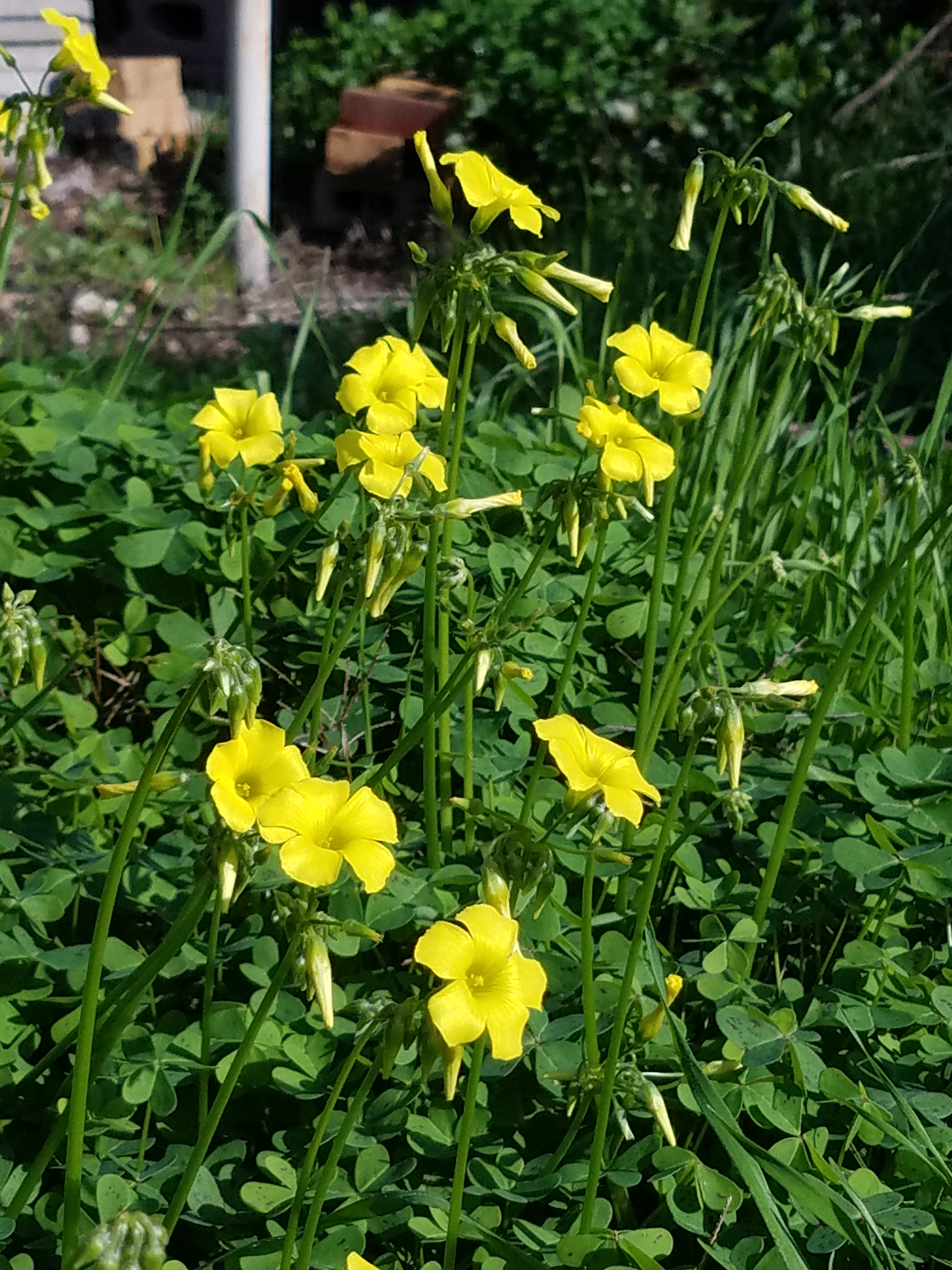

That time of the year again. When the Oxalis makes another pass at taking over the yard. Fortunately the bees really like it and it makes a good dye for cotton and wool.
(Old post notes about dyeing with Oxalis)



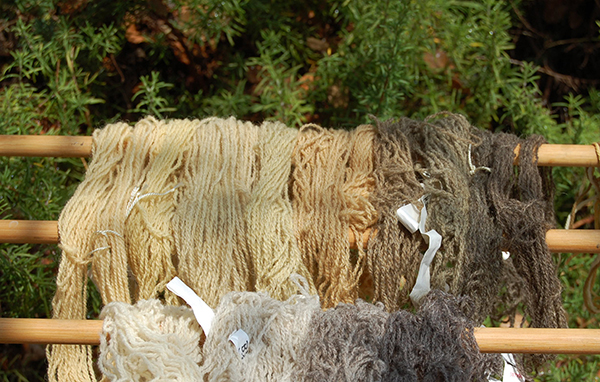
I have lots of Rosemary. Even sharing it, making incense and medicinals there’s lots left over. At some point it does have to be trimmed back so I tried it out as a dye plant.

The bottom row is what I started out with, my standard Bartlett yarn ‘natural white’, light gray, medium and dark gray. Cotton was unsuccessful.
For the dye stuff, starting with Ida Grae’s suggestions* I used fresh Rosemary 1×1 and 3×1. Simmered the Rosemary for an hour and let it cool over night.
Here are a couple of sites that describe Rosemary as a dye.
Naturally Dyeing: <http://naturallydyeing.blogspot.com/2011/05/rosmarinus-officinalis.html>
Dyeing Fabric with Culinary Herbs: <http://www.motherearthliving.com/garden-projects/culinary-herb-goes-dye-crazy.aspx>
Ida Grae points out that most cooking herbs will produce yellows. If I can eat or use something as a medicinal I tend not to dye with it but the Rosemary here is so plentiful it’s worth trying. Same probably goes for Lavender but I haven’t tried that yet.
*Ida Grae / Nature’s Colors: Dyes from Plants, 1979.

This was back in April the Weld started shooting up.

The tomato cage might give an indication of the height of the plant. I’ve seen them grow much taller. This one however is flowering so it’s unlikely to see more growth.

Almost ready for seed saving.
Weld plants from June to July. Some Woad in the background. These seem to be surviving the drought weather under tree shade. Last year’s Weld and Woad and actually most of my herb garden didn’t survive the heat wave so this year I’m more focused and picking areas of the yard where they might survive.
For the record, mine are growing these in southern California, USA. Definitely not native to the area. The two pictured have started blooming and not (not in the picture) haven’t taken off yet. But even two plants can be good for dyeing since Weld is one of those wonderful plants where everything from areal parts – from the ground up is used.
More about Weld: <http://www.wildcolours.co.uk/html/weld.html> from Wild Colors in the UK. Good pictures and info about growing, harvesting and dyeing.
Lastly the ubiquitious Wikipedia: <https://en.wikipedia.org/wiki/Reseda_luteola>

Jack, through the back screen door. The cats are always looking for the door to spring.
Garden around late January, early February.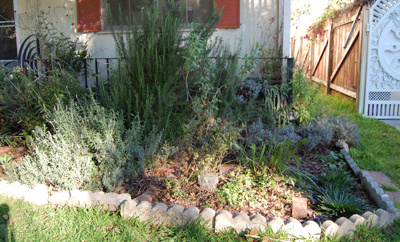
Still looks a bit bare. Shortly after this picture was taken the Weld took off.
Weld
I haven’t written much about using Weld. From: A Dyer’s Manual / Jill Goodwin (ISBN 0-7207-1327-7)
“The whole plant above ground may be chopped and simmered fresh, or carefully dried for use during the winter. There is little difference in the depth of yellow color from fresh or dried plants but the range of greens is greater from freshly cut leaves and stems.” (p.63)
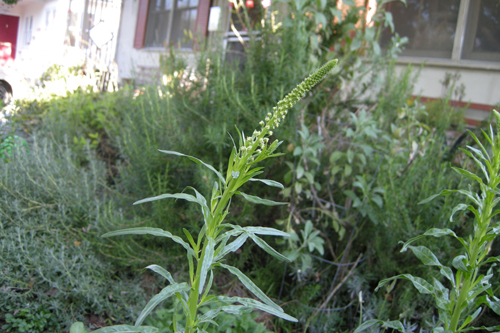
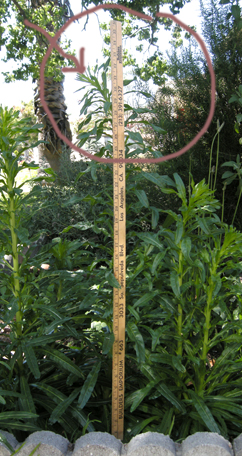
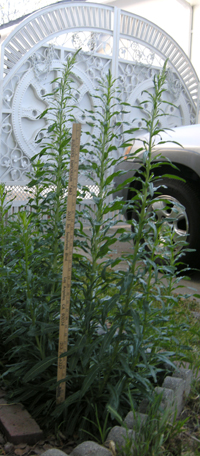
[Weld plants, pictures taken only a couple of weeks apart. ]
Goodwin also mentions that the the plants grow about 3ft before flowering.

And the Woad


Powered by ScribeFire.

Earlier this week I picked the first Oxalis of it’s – the Oxalis’ season. I don’t think that this really qualifies as a “season” but what I’ve observed locally is: Fennel blooms and continues more-or-less to late Spring to Fall and Oxalis blooms late in Fall and continues to Spring. (Glove on the hand because I am a total weather-wimp.)
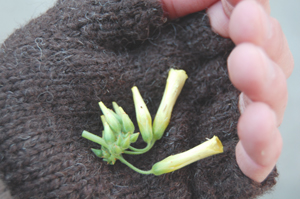

And since I’m writing this on the (United States) Thanksgiving Day holiday, I will note that one can always be thankful for a consistant, reliable dye plant that dyes wool, cotton and probably things I haven’t tried yet. (And the bees like it too!)

Powered by ScribeFire.
Hibiscus Rose Mallow (Hibiscus spp.) on Wool, scoured but no pre-mordant or pre-Alum.

Far left, Hibiscus with a pinch of copper after-bath. Middle, dried Hibiscus flowers mashed (in the dye pot while simmering, before adding the wool) to yield a darker color. On the right wool and soy-silk simmered conventionally with dried Hibiscus. Other fibers – like silk – will probably get different results – but this is what I got dying wool.
Again, the wool samples were not pre-mordanted. Simmered, lowest stove setting, for about 3 hours, sat in the pot 2 days. I haven’t done a fade-test yet but much of my dyed wool ends up a boot sock, in a boot out of the sun, under a hot pot, on the floor, on a wall but not out in the sun so up to now fading hasn’t been a problem.
One well might ask why more yellow. Quite a few plants yield yellow so
chances are yellow is what you will get. For me, yellow is handy for later
overdying with Indigo or Madder. The small sampler rug (above)
wasn’t dyed with Hibiscus specifically but an example of what can be
done starting with mostly yellow, excluding the black wood.
Next, I’m trying to find local plants that don’t require strong chemical mordants. Like onion peel and Wood Sorrel, you can probably use this at home.
Copper after-bath on the far left could have been accomplished with an Indigo over-dye, otherwise the rest of the tests were done without mordanting (copper, tin, chrome, etc.) Different dye-times and mashing up the dye stuff yield different shades of yellow. I don’t mind using vinegar or amonia, but those two didn’t change the color much.
Lastly, Hibiscus is easily available in Los Angeles, southern California, and works dried or fresh. The shrubs are all around the city and I have a small plant at home so it’s easy to stock up. For a good laugh, picture me wandering around in the back of a Nordstrom’s parking lot with picking up dried Hibiscus.

Since I now know what I’m actually growing I’ve been reading up on Dyer’s Weld (Reseda luteola) – Ida Grae, etc. It can be used fresh or dried and I’ll probably harvest the tops as they bloom and dry them.
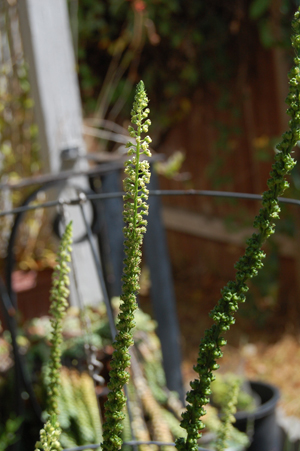
I put a yard stick in the picture for size context. Picture below is a 2nd year plant. I’d say it falls between my elbow and shoulder but since I’m behind the camera that doesn’t give anyone an idea of the height.
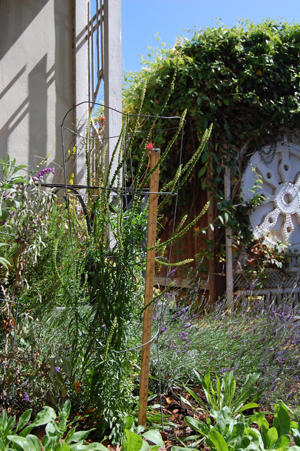
Not the most exotic sounding dye material but don’t underestimate the onions or the onion skin. For me it has been a reliable, versatile dye that I can use on both protein and plant fiber. So far I’ve dyed wool, cotton, and soy silk.

Above, pre-alumed wool dyed with onion skins. The green is indigo over-dyed in the same batch. The plant:fiber ratio was .5:1 but I believe that I could have used considerably less dye stuff. The onion skins and fiber had been simmered for an hour and left to soak over night. The next day the dye still wasn’t exhausted so I over-dyed some previously indigo-dyed wool.
Copper and Iron after-baths darkened the color but ended up with similar shades. The Ammonia after-bath brightened a bit.

Onion skins are easy to save up and store. When I am shopping produce I sometimes tidy up around the onion bin.
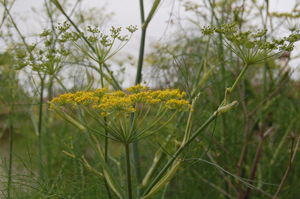
In some areas Fennel is considered a noxious and/or invasive weed. But for me, Fennel has always been a nice, well-behaved multi-use plant. It even smells good in the dye pot. (And I can identify it correctly : see post about the Woad that turned out to be Weld.)
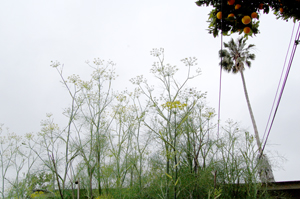
Fennel has also become one of of my seasonal markers. Wood Sorrel runs through half of the year and as it dies off the Fennel starts up. And visa versa. So I am always stocked with yellow dye.
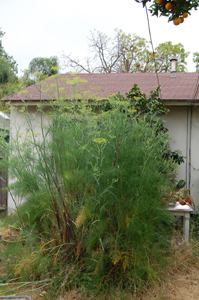
Quick note: Fennel by my experience works only well with protein fiber (i.e. wool), I’ve never successfully dyed plant fiber such as cotton. Wood Sorrel on the other hand dyes anything I’ve tried. The only exception has been corn fiber.